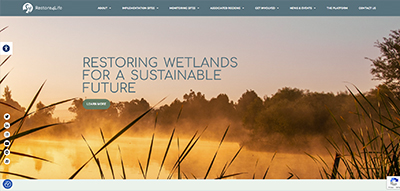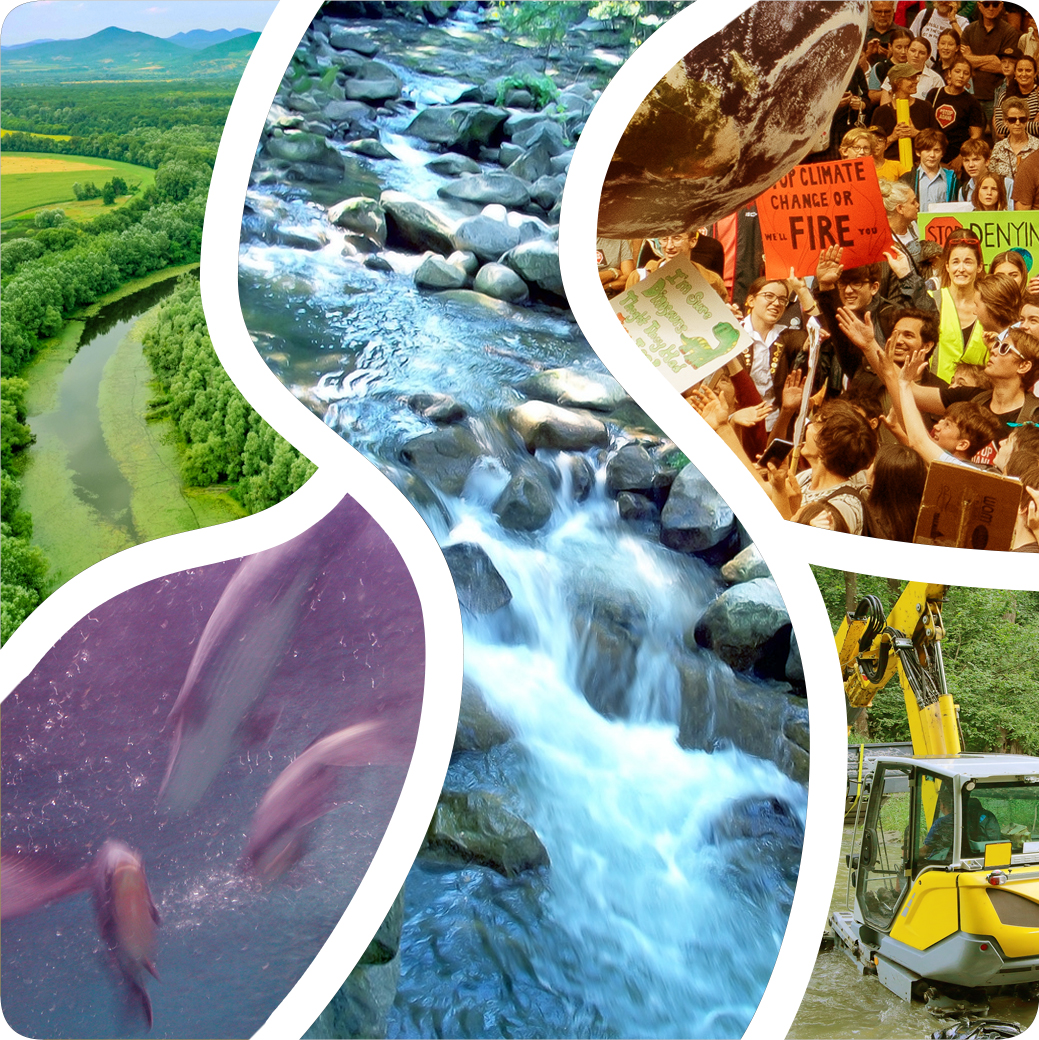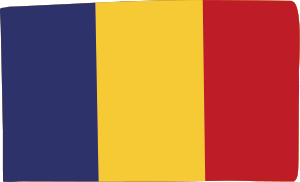Mihai Cristian Adamescu
Researcher
University of Bucharest/Research Center in Systems Ecology and Sustainability
Scientists & Researchers

My Projects
 Restore4Life project (Horizon Europe)
Restore4Life project (Horizon Europe)
- Key project facts
One of the most important initiatives I’ve worked on is the Restore4Life project (Horizon Europe), which supports the reconstruction and long-term resilience of European wetlands, with a focus on the Danube River Basin. The project’s primary goals are:
- To identify and prioritize wetland areas for restoration using geospatial data, hydrological modeling, and stakeholder knowledge.
- To co-develop a Decision Support System (DSS) that supports evidence-based policymaking and stakeholder involvement in restoration planning.
- To engage local communities, authorities, and businesses through Living Labs (demo sites; implementations sites), enabling the co-creation of innovative solutions for wetland recovery.
- To establish a virtual platform for monitoring, stakeholder engagement, learning, and policy reporting on wetland restoration progress.
- To enhance carbon storage, biodiversity, and ecosystem service delivery by piloting nature-based solutions in real-world sites (e.g., Mahmudia in Romania).
- What impact did these projects have on biodiversity, if any?
Restore4Life directly contributes to biodiversity recovery by:
- Restoring degraded wetland ecosystems, enhancing habitat availability for threatened and endemic species, including birds, amphibians, and aquatic life.
- Supporting species reintroduction and improved connectivity between freshwater and terrestrial habitats.
- Promoting nature-based solutions that enhance natural processes (e.g., nutrient retention, floodplain reconnection), improving ecosystem function and resilience.
- Facilitating community stewardship and integration of biodiversity goals into local and regional planning processes.
The pilot sites demonstrate improved ecological status, increased biodiversity indicators and more favorable conditions for species migration and reproduction.
- What work challenges did you face and what approach did you take to solve them?
Citizen‐science (CS) data reliability
- In Restore4Life, we compared CS-based assessments of water quality, organic carbon stocks, and plant biodiversity against professional surveys
- Issues uncovered:
- Difficult access to certain habitats, poor connectivity hampered GPS data collection.
- Water quality testing in organic-rich wetland water was error-prone.
- Participants misidentified plants and favored accessible, less-representative plots.
- Solutions implemented:
- Refined CS protocols to focus on robust parameters.
- Enhanced training for volunteers, including clear species ID guides and better mapping support.
- Introduced stratified site selection to ensure sampling across diverse habitat types.
Developing reliable, scalable assessment frameworks
- Early work produced a “Wetland Restoration Wiki” and a performance-based evaluation framework from systematic literature reviews
- Issues uncovered:
- Translating review insights into practical, fieldable indicators was complex.
- Ensuring the Decision Support System (DSS) catered to ecological, governance, and socio-economic dimensions.
- Solutions implemented:
- Iterated frameworks with input from demonstration and monitoring sites across the Danube basin.
- Structured the DSS around several key restoration performance domains: governance, ecology, services, business viability, and engagement
- What lessons learned are transferable to other places/projects?
Robust Citizen Science requires design with constraints in mind
- Example: Recognize terrain access, provide structured sampling protocols, and tailor volunteer training.
- Transferability: Essential for scaling CS efforts in diverse socio-ecological settings.
Holistic, multi-criteria frameworks enhance project adaptability
- The Wetland Wiki-based performance framework integrates ecological, governance, economic, and engagement indicators.
- Transferability: These multi-dimensional evaluation systems support planning and monitoring in varied landscapes.
Stratified sampling ensures representative monitoring
- The bias toward easy access sites in CS sampling highlighted the need for deliberate site selection across gradients
- Transferability: Useful for any restoration effort where landscape heterogeneity is high.
Iterative co-design produces better restoration tools
- Combining literature reviews, site testing, and stakeholder-led refinement led to a robust DSS
- Transferability: Co-design with local actors ensures higher tool adoption and contextual relevance.
Digital platforms foster long-term engagement and dissemination
- The Restore4Life virtual service supports communities of practice, workflows, and knowledge exchange
- Transferability: Cloud-based platforms can bridge practice-policy gaps in various ecological restoration contexts.
- What is your biggest barrier and what are you trying to do about it?
No. The project is still running. So still a lot of space for making mistakes….
My Focus and Approach
- Lessons Learnt - Some recommendations for others?
- What’s most important:
Working with people.
- Do this, not that:
Don’t think that you are brighter than other; by humble and learn all your live.
- Always start by:
Listening for sure many people have a better understanding of the situation then yourself.
- What to do when things get difficult…:
Endure and find solutions (or do nothing and then take in the consequences).
- 5 simple steps to:
Listen; talk; learn, explain, listen, act (oh there are 6)
- The biggest barrier and what I am trying to do about it:
Patience is key
- What’s most important:
My Journey
- My current role:
Im working as a researcher in ecology at RCSES; coordinating the R4L project.
- My journey:
I started working long time ago, having a dream that people will understand the wetlands are very important for the people; and that during time we will became more wiser.
- My Education:
I have a PhD in Ecology at University of Bucharest.
- The Big Change:
Difficult to say…Im just a grain of sand
- Favourite part of the work I do:
Field work, working with people
Interview
Key Topics:
Key Topics
These relate to specific topics (e.g. technical solutions; restoration activities etc.) addressed within the showcase materials.
- Compiling approaches and methods that have worked in freshwater restoration
- Establishing a living platform
- Holistic projects needed
- Re-establish trust with local stakeholders, co-design measures
Prone2Success Factors Demonstrated:
Prone2Success Factors Demonstrated
These are the Prone2Success checklist factors which are highlighted within this showcase. More information on the Prone2Success checklist can be found here.
- Measurable goals to improve ecological status
- Measurable goals to improve ecosystem services
- Supports WFD, NRL and other restoration policy goals
- Communicate/engage with stakeholders from the outset
- Engage with the local community from the outset
- Obtain sufficient finance for all project stages
- Restoration works (design) are self-sustaining
- Local planning processes are transparent / clearly understood
- Include long term monitoring
- Include adaptive management approaches (combined with monitoring)
- Ensure stakeholder understanding / education of restoration goals & benefits
- Demonstrate specific ecological improvements/legal compliance / communicating results during and after the project
- Take climate change into account
NRL Restoration Categories:
NRL Restoration Categories
These are the restoration categories (listed under Annex VII of the European Nature Restoration Law (NRL) which are relevant to this showcase.
- [2] Improve hydrological conditions
- [5] Re-establish river meandering
- [6] Remove obsolete barriers
- [7] Re-naturalise river beds
- [8] Restore natural sedimentation
- [9] Establish riparian buffers
- [12] Assist migration of provenances and species
- [22] Improve connectivity across habitats
- [24] Remove / control invasive species
- [26] Restore fish spawning / nursery areas
Was this information useful?
No
Thank you for submitting feedback.
Click here to share your thoughts
Resources
Articles
- Carl Folke et al. — Resilience in Social-Ecological Systems; a new vision of the relationships between the human and the env
Videos
Restore4Life - Restoration of wetland complexes as life supporting systems in the Danube Basin
Peer reviewed papers
- Maasri, A., Jähnig, S.C., Adamescu, M.C., Adrian, R., Baigun, C., Baird, D.J., et al. (2022) A global agenda for advancing freshwater biodiversity research. Ecology Letters, 25, 255–263. Available from: https://doi.org/10.1111/ele.13931
- van Rees CB, Waylen KA, Schmidt-Kloiber A, et al. Safeguarding freshwater life beyond 2020: Recommendations for the new global biodiversity framework from the European experience. Conservation Letters. 2021; 14:e12771. https://doi.org/10.1111/conl.12771
- Baatz, R., Hendricks Franssen, H. J., Euskirchen, E., Sihi, D., Dietze, M., Ciavatta, S., et al. (2021). Reanalysis in Earth system science: Toward terrestrial ecosystem reanalysis. Reviews of Geophysics, 59, e2020RG000715. https://doi.org/10.1029/2020RG000715
Acknowledgements & Links
This material was provided by: Mihai Adamescu.
Restore4Life project (“Restoration of wetland complexes as life-supporting systems in the Danube Basin”), funded by the European Union’s Horizon Europe programme under Grant Agreement No 101112736.


